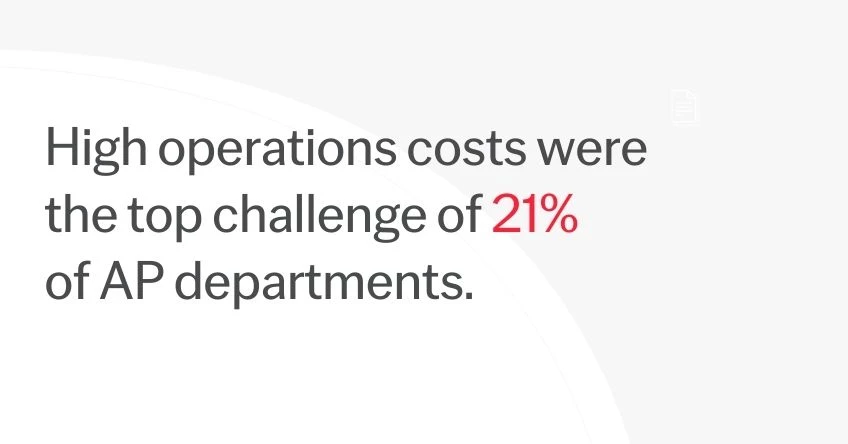How a Multinational Food Enterprise Uses AI to Achieve Delicious Results
Mark Brousseau
May 21, 2024
Imagine if your accounts payable (AP) staff could focus more of their time on fulfilling, higher-value activities, instead of manual repetitive tasks such as keying invoice data and fixing typos.
That’s what this multinational snack-food supplier was able to achieve by automating their invoice processing worldwide with intelligent document processing (IDP) solutions powered by artificial intelligence (AI). Now, the company processes its invoices faster, more accurately, and with less human operator intervention.

Jump to:
Top challenges in AP departments
Uncovering AP bottlenecks
Benefits of purpose-built AI in accounts payable
Exploring the top challenges for accounts payable in 2024
Are manual AP processes slowing you down? According to the Shared Services & Outsourcing Network (SSON), only 5.8% of shared services claim their AP is highly automated in 2024.
To explore how AP departments can achieve best practices with AI and automation, I was recently joined by Andrew Pery, digital transformation expert and AI ethics evangelist at ABBYY, and Daniel Bunch, senior manager at a global food enterprise, for an insightful discussion at SSON’s AP Automation Digital Summit 2024.
At the SSON webinar, 29% of attendees identified inadequate visibility as their biggest accounts payable challenge. High operations costs were the top challenge of 21% of AP departments. Too many supplier inquiries (identified by 14% of webinar attendees) and high risk of payment fraud (11%) were other AP challenges identified by webinar attendees.
While it may seem like a far-off dream for most AP leaders struggling with manual AP processes, a lack of automation is largely to blame for the challenges that AP departments face.
Only 6% of attendees to the SSON webinar described their AP department as being “fully automated with no manual processes.” Meanwhile, 61% of the SSON webinar attendees reported that their AP process is “partially automated with lots of manual processes,” while 9% of webinar attendees admitted that their department relied on “manual, paper-based” processes.

Uncovering AP challenges
"Before automating its AP process with AI-powered IDP solutions, this global snack-food supplier used to face data entry errors and the other types of AP challenges identified by shared services leaders who attended the SSON webinar,” said Donald Bunch, senior manager for automation development and governance at the multinational food enterprise. In many cases, staff had to handle the same document multiple times.
But one of the biggest reasons they automated their invoice-to-pay process was difficulty scaling their local AP processes to keep up with the company’s growth.
“Instead of having to hire 50% or 75% more people to keep up with our growing volume of invoices, we wanted to find ways to aid that process through automation and reset what our team was working on day-to-day,” Bunch said.
The company rolled out invoice-to-pay solutions across about 20 markets worldwide, representing 14 different languages. In doing so, they discovered that there was a lot of tribal knowledge of the business rules and workflows among AP staff in each of the regions.
“It all was in somebody’s head,” he said. “You might find bits and pieces of the process flow in emails as staff were onboarded. But the process was hard to follow, and there was a lack of standardization.”
As a result, invoices were processed differently in France, Brazil, and Italy.
“We needed to design a solution that would encompass all these different markets and variations and still allow the company to service the unique needs of individual localities,” Bunch explained.
How AI is used in invoice processing
That’s where AI proved very beneficial, the company uses a combination of natural language processing (NLP) and machine learning (ML) for automated invoice processing.
- NLP analyzes the semantics of invoices to help the ERP application to make sense of the many variations of AP terminology on the invoices submitted by the company’s vendors.
- ML helps train the AI model on all the different types of documents that the company receives and uses inference to streamline the processing of invoices that it has never seen before.
The multinational food snack provider also constructed robotic process automation (RPA) around its AI components to help streamline the flow of invoices and data downstream.
Attendees at the SSON webinar said that 38% are learning about AI in AP, while 32% said their organization is currently evaluating AI solutions for AP. Only 12% of the webinar attendees are currently using AI for AP tasks such as invoice processing.
AI-powered solutions can liberate AP staff from the manual, repetitive tasks that bog them down.

Benefits of transforming AP into a strategic powerhouse
Purpose-built AI technology enabled this multinational organization to achieve faster invoice approval times, greater accuracy, and a higher percentage of invoices posted directly to its ERP without human operator intervention.
"Automating the processing of invoices submitted by suppliers frees staff from ‘swivel chair work and data entry ’so they can focus more time on disputed transactions and other value-added activities that a bot cannot do,” Bunch said. “There’s no reason that an associate should be spending their time entering information from a PDF into our [enterprise resource planning application],” he explained.
The company also standardized its AP processes through automation, a benefit that Bunch said, “cannot be overstated”. They started with implementing AI-powered solutions for AP in its two markets with the most complex invoice processing requirements. The company created a core of what all AP solutions should look like – encompassing processes such as exceptions resolutions – with the understanding that invoices would be processed differently, depending on the country in which they were received. The implementation team also painstakingly documented all the processes for both markets. And it gathered as many invoice samples as possible to test how the AI technology would perform.
Throughout the implementation process, the team provided iterative demos to the line of business owners every two weeks to show the progress they made in automating their invoice-to-pay process.
“We made sure that the business team was extremely close to these implementations,” Bunch said. “You don’t want to hide away in the lab and create a technology solution without giving business owners the opportunity to provide feedback and to identify ways to improve the process.”
Automation has enabled them to unlock the value of the data that flows through its AP department. “We’re trying to strategically understand all of the information that we’re [extracting],” Bunch said.
Curious to learn more about how a multinational snack food supplier used AI-powered technology?
Click here to watch the SSON webinar at your convenience.

